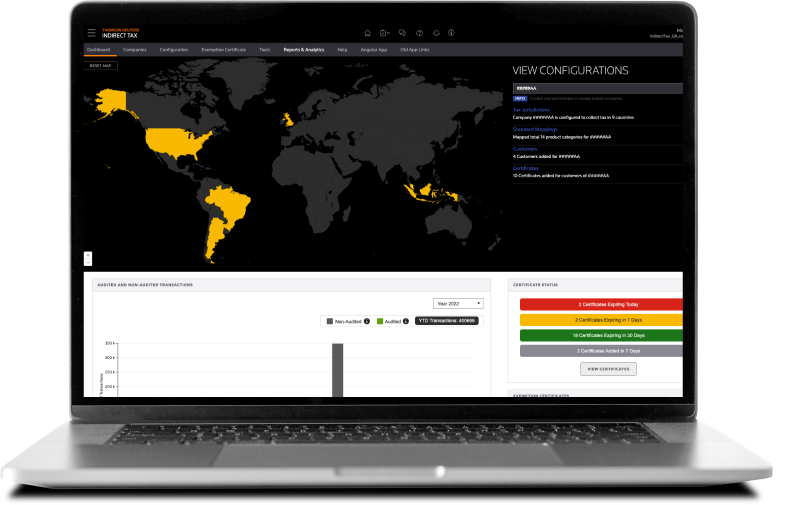The power of proactive compliance
Steps to conducting a reverse audit for sales tax overpayments.
Jump to:
Companies looking for ways to reduce the risk of tax overpayments and/or identify systemic issues that could prevent future overpayments may want to consider conducting a reverse sales audit. Such audits can also uncover industry-specific credits and exemptions that may have been overlooked.
What is a reverse sales tax audit?
Unlike a traditional audit, which is conducted by tax authorities and aimed at identifying tax underpayments, a reverse audit is a proactive audit conducted to identify instances when a company has inadvertently overpaid on its sales tax obligations and is entitled to a refund. In some cases—large manufacturers, for instance—a reverse audit can uncover thousands or even millions of dollars in overpaid taxes.
“In a reverse audit, you’re looking for particular credits, exemptions, or overpayments, so you want to be familiar with the applicable tax laws in jurisdictions where the company operates,” advises Carla Yrjanson, who spent seven years as a tax auditor and now is Vice President for Indirect Tax Research and Content at Thomson Reuters.
Companies should also be aware that a reverse audit “typically applies to sales taxes paid by the business or use taxes remitted,” Yrjanson says—meaning that a reverse audit addresses the tax paid on purchases the company has made, not products or services it has sold. Correction of taxes overcharged to customers is handled a bit differently. In those cases, the overtaxed amount must be returned to the customer before the tax authority will issue a refund.
Why would a company overpay taxes?
There are many reasons why a company might overpay sales or use taxes without knowing it. Among the most common oversights are:
- Paying taxes on items that qualify for a legal exemption
- Being unaware of legislative changes in authorities where the company operates
- Not validating the amount of sales tax charged by vendors on items purchased along the supply chain
- Failing to update tax and compliance systems to account for rule changes in applicable authorities
- Neglecting to claim industry-specific credits
What information is necessary for a reverse audit?
If a company suspects it has overpaid tax and decides to conduct a reverse audit, the first step is to gather evidence that supports an overpayment claim.
In most cases, those conducting the audit will need:
- Purchase invoices
- Depreciation schedule
- Exemption certificates
- Supporting documentation for exemptions
- Use tax remitted on sales and use tax returns
- List of vendors and associated products/items/services
- Related accounting records and documents
- Documentation from previous audits or tax authority correspondence
One caveat: the data-collection process for a reverse audit can be time-consuming if a company has not automated its indirect tax processes and must gather the data manually. Automation makes the process much simpler, because sales and use tax data is continuously archived and reports containing the necessary documentation for an audit are relatively easy to produce.
How to start reviewing tax data for overpayments
According to Yrjanson, reverse audits usually begin by targeting the areas where an overpayment is most likely. One of the most common sources of sales tax overpayment in a complex supply chain, she says, is relying too heavily on individual vendors to determine the proper tax in the first place.
“Vendors may miss legislative changes that impact the taxability of the items they supply,” Yrjanson says, “so they may be inadvertently applying the incorrect tax until they realize the error.”
Finding those elusive exemptions
The most fruitful area of exploration for a reverse audit may be industry-specific credits and exemptions that the company is either unaware of, isn’t using, or isn’t administering properly.
For example, many industries have sales and use tax exemptions, especially in manufacturing, agriculture, digital products, and heath care providers—but identifying exemptions isn’t always obvious, Yrjanson says.
“In manufacturing, for example, exemptions for equipment used directly in the in the manufacturing process are common,” Yrjanson explains, “but you have to determine where the manufacturing process begins and ends, so identifying what equipment is eligible for exemption may require some interpretation and a deeper dive into the law.”
Manufacturers and many other types of businesses are also often eligible for resale exemptions which includes items that become a component part of a product sold.
SoftwareEffortlessly collect exemption certificates with the Exemption Manager in ONESOURCE Determination. |
How to claim a refund for a sales tax reverse audit
What should a company do if it discovers that it has indeed been overpaying?
“The first thing to do if you discover you are overpaying is to stop overpaying going forward, then you’ll want to determine the process for requesting a credit for the overpayment,” Yrjanson says.
The process to be followed, data to be provided, and length of time to be considered depends on the specific tax authority as well as on the size of the credit being requested. For large credit requests, it is likely the tax authority will want to conduct their own investigation of the claim. If state authorities agree with the company’s assessment, the authorities may issue the refund in cash or extend a future credit.
One thing to be aware of, however, is that if a large amount of money is involved, submitting a credit request to tax authorities may trigger a larger audit of the entire business. Before submitting a credit request to authorities, then, a company may want to have its lawyers or tax professional review the request to make sure it is a strong one.
After the audit: making changes
As a best practice, companies that conduct a “successful” reverse audit should then take steps to ensure that the correct tax is being applied to all future transactions.
According to Yrjanson, the most important step a company can take to prevent the need for a reverse audit in the future is to automate the indirect tax function so that the correct tax is programmed into the system. “With a system like ONESOURCE Indirect Tax Determination, for example, the tax will be calculated according to the rules you have set up,” she says, “and it will flag any transactions that fall outside those parameters.”
Part of the automation process also involves automatically incorporating changes in legislation or interpretations of the law that may affect tax calculations. Also, if a compliance team wants to raise or lower its risk tolerance, it can manage those levels on its own within the program. Once an automated system is properly set up, there should be no need for a reverse audit, Yrjanson says, because “the data you would need to conduct a reverse audit is constantly being evaluated.”
Finally, as a best practice, Yrjanson advises compliance teams to periodically review their tax decisions to ensure that all calculations are correct and reaffirm that they align with the company’s goals and tolerance for risk.
To learn more, check out our infographic on how to prevent incorrect indirect tax calculations by starting with the invoice or see other solutions for indirect tax compliance.
Free demoTry out ONESOURCE Determination for free and get accurate indirect tax calculations for sales, use & excise tax, VAT, and GST. |
 |






